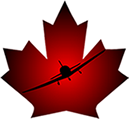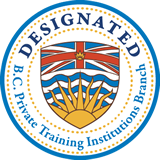 |
|
The Climb
“It’s wonderful to climb the
liquid mountains of the sky. Behind me and before me is
God and I have no fears.”
-Helen Keller The essence
of an aircraft is that, given the correct inputs, it can lift itself off the
ground and take to the air. It is a machine that, miraculously, allows us
mere humans to move above the surface of our planet in that great sea of air
giving us a view of the world enjoyed by only a few, fortunate souls.
Without the capability to climb, an aircraft would merely be an expensive
bus with parts sticking out making passage through traffic a sore trial. The ability
of an aircraft to climb is termed its climb performance, and there is a
great range in climb performance from one aircraft type to another. Some
aircraft we think of as having great climb performance. An F-16 fighter
aircraft, for example, according to the Lockheed Martin Corporation, climbs
at 50,000 feet per minute at sea level. Some aircraft demonstrate less
exciting climb performance. I’ve watched my little 100 hp Champion Citabira
climb out at a blistering rate of 2-300 feet per minute when loaded to gross
weight on a warm day. We rely on
our aircraft’s climb performance for a number of purposes. Initially, we
must move the machine from the ground to the air. We must then be able to
clear obstacles in our path, and we must be able to achieve sufficient
altitude for a given flight. Perhaps, we might be flying from the coast to
an inland destination and, checking our charts, we see there are mountains
in our way.
Additionally, as altitude increases true airspeed also increases allowing us
to fly faster over the ground and maximize the efficiency of our engine,
increasing our range. Reaching an appropriate cruising altitude as soon as
possible has considerable advantages. A number of
generic factors affect the ability of any aircraft to climb including the
weight of the aircraft, the location of its centre of gravity, density
altitude and humidity, use of carburetor heat, deployment of flaps and
landing gear, turbulence and the pilot’s accuracy and skill in maintaining
correct angle of attack and airspeed. An aircraft
climbs proportionally to excess thrust or total available thrust minus total
drag, and inversely in proportion to weight. With propeller driven aircraft,
best rate of climb is achieved at the speed that produces maximum excess
thrust horsepower (ETHP). ETHP is thrust horsepower produced by the
engine/propeller beyond that required to maintain level flight. The
aircraft’s rate of climb (R/C), how quickly it gains altitude, expressed in feet per minute
(fpm), can be derived from the formula: R/C = ETHP x 33,000/Weight (1). We see from
the formula that increasing the weight of an aircraft is a significant
factor. Doubling the weight will cut our rate of climb in half. A lighter
aircraft will out-climb its heavier sister in direct proportion to the
difference in weight. The
location of the centre of gravity also affects rate of climb. An aircraft
with a more forward centre of gravity finds itself at a disadvantage to an
identical aircraft at the same weight with a more aft centre of gravity.
Moving the centre of gravity forward requires additional down-force
developed by the tail-plane. This down-force acts on the aircraft like
weight and, effectively, increases the total weight of the aircraft. Density
altitude significantly affects the climb performance of an aircraft. High
density altitude, the performance altitude at which the machine is
operating, reduces climb performance. Humidity, which can be factored into
density altitude, also reduces performance primarily through adversely
affecting engine performance. High humidity results in reduced power output
and thus reduced ETHP. A humid day with high density altitude may seriously
decrease our ability to climb Use of
carburetor heat reduces power output from the engine which, in turn, reduces
climb performance. Flaps increase lift but also increase drag. Use of flap
on takeoff may shorten our ground run, but we pay for that advantage as soon
as the wheels leave the surface. Increasing drag effectively reduces ETHP. Landing
gear, if you fly a machine capable of retracting its gear, also increases
drag and thus reduces available excess thrust. To maximize climb performance
with a retractable gear aircraft, let’s get that gear up as soon as safely
possible Angle of
attack is critical to achieving climb performance. With a propeller driven
aircraft, the amount of available thrust decreases with airspeed due to the
decreasing angle of attack on the propeller (2). Increased airspeed rapidly
increases parasite drag produced by the airframe.
To achieve
maximum climb performance in terms of time, it is necessary to maintain an
angle of attack resulting in best rate of climb speed, Vy. In terms of
maximum altitude in relation to distance, we must maintain an angle of
attack producing our best angle of climb speed, Vx. Turbulence and pilot
skill both affect how well an aircraft maintains the correct angle of attack
and thus airspeed to achieve best rate or best angle of climb. Increasing
or decreasing airspeed (angle of attack) above or below Vy or Vx decreases
climb performance. To minimise
unpleasant surprises, if we do find ourselves flying in turbulent
conditions, it would be an excellent plan to consider reduced performance in
any calculation regarding obstacle clearance or time and distance to a given
altitude. The speed
and angle of attack for Vy is dependent on maximum
excess thrust horsepower
(excess power) and thus decreases with altitude. Vx, our best angle of climb
speed, is dependent on maximum excess
thrust (excess force). IAS for best angle of climb increases as we gain
altitude. Vy and Vx
eventually converge as we approach our absolute ceiling, the altitude at
which the machine’s ability to climb at full power reaches zero. A Rule of
Thumb for estimating the decrease in Vy with altitude is to reduce indicated
airspeed by 1% or 2 knots for each 1000’ increase in altitude above sea
level, excluding the first 1000’ (3). For Vx, a good Rule of Thumb is to
increase indicated airspeed by ½% or 1/2 knot per 1000’ or, more simply, 1
knot per 2000’ increase in altitude (4). To
establish a cruise climb, the angle of climb we might use once we have
achieved a safe altitude and are heading out on a cross country flight, we
can simply add the difference between best angle of climb speed and best
rate of climb speed to best rate of climb speed (5). For the C-172, for
example, at 3000’ the best rate of climb is 76 KIAS best angle of climb is
60 KIAS; 76 – 60 + 76 = 92. We can use this speed to maximize our distance
made good and, at the same time, maintain a reasonable rate of climb. Contrary to
what many people suppose, climb is not produced by excess lift. Initially,
pulling the nose up to enter a climb does briefly produce excess lift
resulting in vertical acceleration. Once established in a steady state
climb, however, it is excess thrust that causes an aircraft to climb, as our
formula shows. In a steady state climb our angle of attack will be identical
to that for the same aircraft in level or descending flight at the same
airspeed, assuming identical weight, centre of gravity location and
environmental conditions.
Intuitively, we might think that because we see a nose up attitude in a
climb that our angle of attack must be greater than when flying straight and
level. We don’t want to confuse angle of climb with angle of attack or rate
of climb, however. Angle of
climb is the angle of our flight path measured in relation to the horizon.
Angle of attack is the angle described between the chord line of the wing
and the relative wind. Our vertical speed, our rate of climb, is the
aircraft’s vertical velocity measured at right angles to the horizon (6). We can say
that, in a climb, our attitude is a measure of our angle of climb plus our
angle of attack. If, for example, in straight and level flight we maintain
an angle of attack of, say, 7 degrees at a given airspeed, on entering a
climb at an angle of 5 degrees at the same airspeed—about typical for a
light, training aircraft—our climb angle is now 5 degrees but our attitude
in relation to the horizon is 7 + 5: 12 degrees So, do I as
a pilot really need to know this stuff? Perhaps not. Understanding the
machine’s POH and allowing, always, a margin for safety normally does the
job just fine. Many people seem to fly happily and safely year in and year
out without knowing very much at all. It is pretty cool stuff, however. I
always figure you can know too little, but it’s impossible to know too much.
The more we dig and learn about this miracle we call flight the more
interesting and compelling it all becomes. Enjoy. Notes:1. Kershner, William K., The Advanced Pilot’s Flight Manual, Iowa State University Press, 1994, page 90. We can work this formula backward and determine that a C-172 which climbs at 645 fpm at gross weight at sea level can develop approximately 45 excess thrust horsepower at best rate of climb speed. One horsepower equals 550 ft lb/sec or 33,000 foot pounds/min.
|


